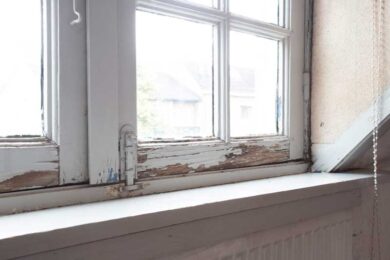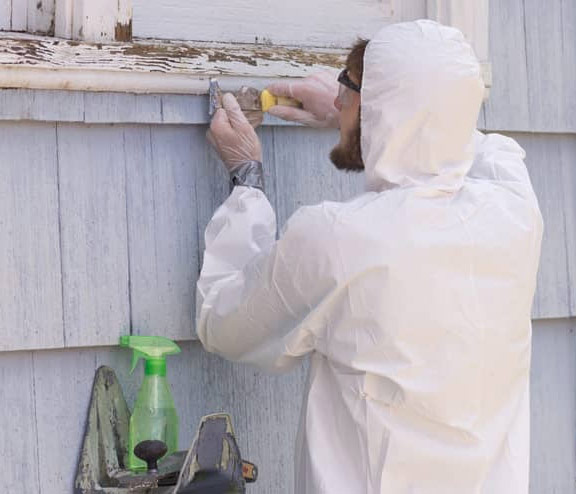NYC Lead Removal Contractors-- Get Safe and Efficient Services
NYC Lead Removal Contractors-- Get Safe and Efficient Services
Blog Article
Crucial Devices and Approaches for Reliable Lead Offense Clean-up
Attending to lead infractions efficiently necessitates an extensive approach that mixes the right devices with critical techniques. The initial step involves equipping employees with Individual Protective Equipment (PPE) to guard their wellness. Concurrently, the use of specialized cleanup devices, such as HEPA vacuums and lead-specific cleaner, is necessary for complete pollutant removal. Efficient containment approaches, consisting of plastic sheeting and adverse atmospheric pressure systems, are vital to prevent the spread of harmful materials. Furthermore, risk-free disposal practices and rigorous adherence to regulative standards make sure responsible handling of hazardous waste. What are the nuanced approaches that really make a distinction?
Individual Safety Equipment
Personal protective equipment (PPE) is a vital element in the efficient administration of lead contamination cleanup. The important PPE for lead cleanup includes respirators, safety apparel, handwear covers, and eye defense.
Respirators, specifically those furnished with HEPA filters, are essential for filtering system air-borne lead particles, avoiding breathing. Protective apparel, consisting of coveralls and disposable fits, avoids lead dirt from adhering to employees' garments, decreasing the threat of additional contamination.
Moreover, extensive training on the correct use and maintenance of PPE is crucial. Workers have to be educated on wearing and doffing procedures to stay clear of contamination. Regular assessments and replacements of PPE elements are necessary to preserve their safety capabilities, making sure a safe and compliant cleaning operation.
Specialized Clean-up Devices

One more essential tool is the wet/dry vacuum cleaner, which can effectively clean up both dirt and fluid contaminants. These vacuums usually come with HEPA filters to supply an added layer of safety. Wet cleans or tack towels are also essential for surface area cleansing; they are especially developed to catch and hold lead bits, lowering the risk of spreading contamination.
For more stubborn down payments, specialized lead-removal cleaner are called for. These representatives are formulated to break down lead particles, making them simpler to eliminate. Scrub brushes with tough bristles can assist in this procedure, especially on rough surfaces where lead dust tends to adhere more strongly.
Additionally, encapsulants are used to seal lead-contaminated surfaces, avoiding the release of lead dust. These specialized paints and coverings are developed to stick to various substratums, giving a lasting remedy for lead control.
Efficient Control Techniques
Efficient containment methods are essential in reducing the spread of lead contamination during cleanup tasks. Applying durable containment techniques ensures that lead fragments do not move to unaffected areas, thereby shielding both employees and the atmosphere. One main method is using plastic bed linen to seal contaminated areas. Durable polyethylene barriers can be installed from flooring to ceiling to produce a controlled job area, considerably reducing the threat of airborne lead dirt dispersal.

To boost containment, encapsulants can be used to surfaces that are not being removed or disrupted. These specialized coverings bind lead dirt, minimizing its availability for resuspension. Furthermore, all personnel have to use appropriate Individual Safety Devices (PPE), consisting of respirators and disposable matches, to avoid contamination spread.
Safe Disposal Practices
Ensuring risk-free disposal techniques is an important component in the administration of lead contamination cleaning. Appropriate disposal minimizes the risk of lead returning to the setting and endangering public wellness. The very first step is to recognize and segregate lead-contaminated waste from other products. Safe and secure containment utilizing sturdy, watertight containers is crucial to avoid splilling throughout transport.
Delivering lead waste calls for adherence to strict guidelines. Using certified harmful waste service providers makes certain that the materials are handled responsibly. Paperwork, including materializes outlining the type and quantity of waste, ought to go along with shipments to track the waste from the site of origin to its final disposal destination.
Designated contaminated materials disposal facilities are equipped to handle lead-contaminated materials securely. These facilities usually utilize advanced techniques such as stabilization, solidification, or chemical treatment to neutralize the lead before disposal. Landfilling in specialized, lined locations that prevent leachate from contaminating groundwater is a common technique for last disposal.
Normal training for workers associated with lead waste disposal is crucial to maintain safety and security requirements and stop unintentional exposure. By sticking to these methods, organizations can significantly lower the ecological and health and wellness impacts connected with lead contamination.
Regulatory Conformity Tips

Abiding by regulatory conformity is view it now critical in the effective implementation of lead contamination cleanup. Recognizing and complying with government, state, and regional regulations makes certain not only the safety and security and health and wellness of people however also the legal and economic wellness of the cleaning organization. The Environmental Protection Company (EPA) establishes rigid standards, such as the Lead Restoration, Repair, and Paint (RRP) Rule, which mandates appropriate qualification and training for professionals taking care of lead-based activities.
Compliance begins with a detailed assessment of appropriate legislations and laws. Organizations must stay updated on any type of legal adjustments, which can be facilitated through routine training sessions and signing up for sector updates. Documents is another crucial compliance element; maintaining detailed records of all activities, including inspection reports, employee training logs, and disposal manifests, is important.
Furthermore, engaging with accredited lead examiners or run the risk of assessors makes sure that lead dangers are properly determined and alleviated. Employers should impose using Personal Protective Tools (PPE) and make certain that safety and security methods are purely complied with. Finally, transparent communication with stakeholders, consisting of staff members, customers, and regulative bodies, will foster a society of conformity and responsibility, ultimately contributing to a more secure and a lot more effective lead cleanup process.
Verdict
Effective lead offense cleanup demands the integration of specialized click over here now tools and news calculated methodologies to make sure safety and security and efficacy. Personal safety tools (PPE) safeguards workers from exposure, while risk-free disposal techniques and strict adherence to regulatory conformity are crucial for responsibly handling harmful waste.
Report this page